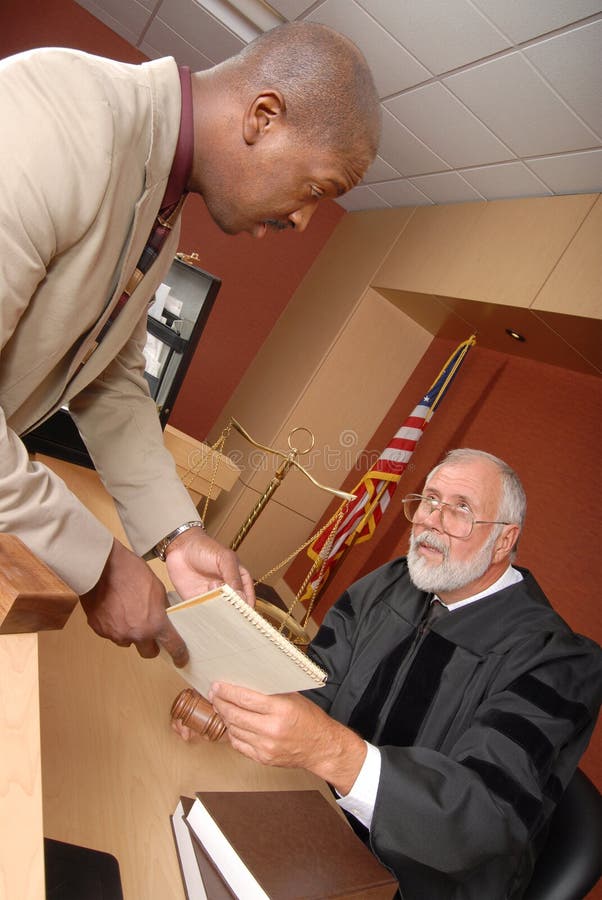Understanding the Art of Trial Presentations: Trick Techniques for Efficient Legal Arguments
Understanding the Art of Trial Presentations: Trick Techniques for Efficient Legal Arguments
Blog Article
Browsing the Intricacies of Test Presentations: Tips for Seamless Distribution and Engaging Debates
In the world of legal proceedings, the art of trial presentation stands as an essential component of success. The complexities fundamental in trial presentations call for a delicate balance of ability, technique, and skill.

Comprehending Trial Purposes
To successfully browse a test, it is important to have a clear understanding of the objectives that require to be achieved. Before tipping right into the court room, legal teams need to specify their objectives and preferred results. These goals function as directing concepts throughout the test, shaping methods and influencing decision-making processes.
Understanding trial purposes entails a thorough evaluation of the case, legal precedents, and the client's benefits. Trial Presentations. It requires a careful evaluation of the facts, determining essential concerns, and expecting possible obstacles. By establishing quantifiable and details objectives, lawyers can tailor their presentations and arguments to line up with the desired results
Furthermore, a clear understanding of trial purposes enables lawful groups to prioritize proof, witnesses, and legal debates properly. It permits the advancement of a coherent story that reverberates with the discretionary, strengthening the general instance presentation.

Organizing Evidence Properly
Having a clear understanding of test goals lays the structure for arranging evidence properly in legal process. By lining up the presentation of evidence with the wanted results of the test, lawful groups can enhance their arguments and improve their persuasiveness.
Another secret aspect in organizing proof properly is developing a logical circulation. Offering proof in a consecutive and meaningful way can assist develop a compelling story that sustains the lawful debates being made. Additionally, making use of visual help such as charts, timelines, or graphes can better enhance the company of proof and assist in clearing up intricate relationships or sequences of events.
Moreover, ensuring that all evidence provided is appropriate and acceptable to the situation is important. Unimportant or inadmissible evidence can diminish the stamina of the disagreement and potentially harm the integrity of today party. Therefore, a careful testimonial and choice procedure ought to be undertaken to consist of only one of the most legally sound and impactful proof in the test presentation.
Crafting Influential Stories
Crafting engaging narratives plays a critical function in presenting persuasive debates throughout lawful proceedings. When building a story for a trial discussion, it is vital to develop a clear story that highlights vital points and attaches them in a meaningful fashion. By weaving with each other evidence, statement, and lawful disagreements into my website a natural and convincing story, lawful experts can effectively promote for their customers and enhance the probability of a desirable end result in the court.
Mastering Aesthetic Help
Reliable usage of aesthetic aids is essential to boosting the impact and clearness of trial presentations. Aesthetic help, when utilized tactically, have the power to simplify complicated info, reinforce vital factors, and leave an enduring impact on the discretionary. To master aesthetic aids in test presentations, it is vital to make certain that they are clear, concise, and pertinent to the disagreements being made.
When integrating visual aids, such as charts, timelines, charts, or photographs, web link into a trial presentation, it is important to keep them aesthetically appealing yet expert. The visuals need to complement the spoken debates, providing a graph of the info being discussed without frustrating the target market with unnecessary details.
Moreover, exercising with the aesthetic aids ahead of time is imperative to make sure a smooth distribution throughout the trial. Familiarizing oneself with the material, shifts, and timings of each aesthetic aid can help keep the circulation of the discussion and prevent technical glitches that may arise.
Supplying Impactful Closing Arguments
A compelling closing argument offers as the end result of a trial discussion, encapsulating the core narrative and persuading the discretionary in click here for info the direction of a desirable decision. To deliver an impactful closing disagreement, it is vital to succinctly recap key points, highlight the strengths of your situation, and resolve any weaknesses in a tactical way. Begin by laying out the primary disagreements that support your client's setting, stressing why the evidence provided throughout the trial supports your narrative. It is vital to develop a sense of cohesion and quality, assisting the judge and court towards the desired final thought.
Moreover, incorporating emotional charm can better reinforce your closing argument. Ultimately, a well-crafted closing disagreement must leave a long-term impact, engaging the court and court to rule in your customer's support.
Conclusion
To conclude, mastering trial presentations includes comprehending goals, arranging evidence, crafting narratives, using visual aids, and providing impactful closing disagreements. By executing these methods successfully, attorneys can provide their situation perfectly and make compelling arguments in the courtroom. It is essential to navigate the intricacies of test discussions with precision and skill to achieve success in lawful process.
By straightening the discussion of evidence with the desired end results of the test, lawful teams can strengthen their debates and boost their persuasiveness (Trial Presentations). To grasp visual aids in test discussions, it is important to guarantee that they are clear, concise, and pertinent to the debates being made
A compelling closing argument offers as the conclusion of a trial discussion, enveloping the core narrative and persuading the court and jury towards a beneficial decision. Begin by outlining the major debates that support your client's position, stressing why the proof presented throughout the test supports your story.In final thought, mastering test presentations entails comprehending objectives, arranging evidence, crafting stories, utilizing aesthetic aids, and supplying impactful closing disagreements.
Report this page